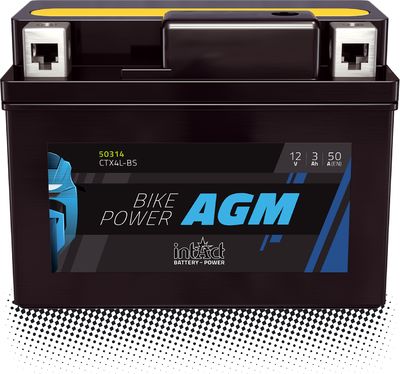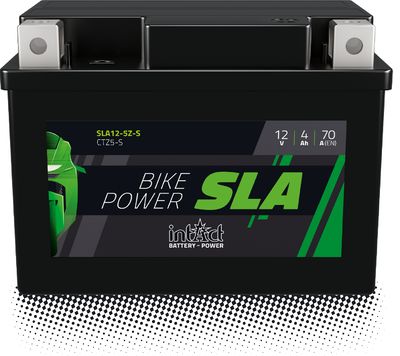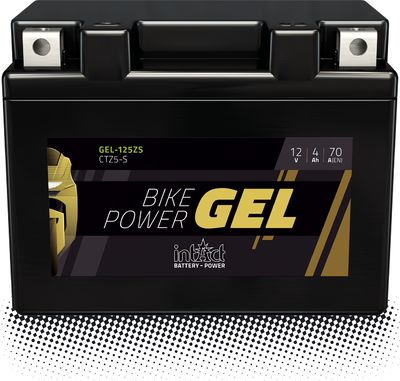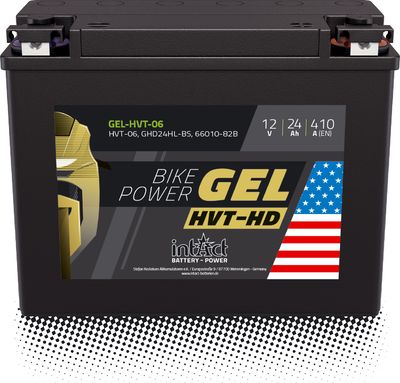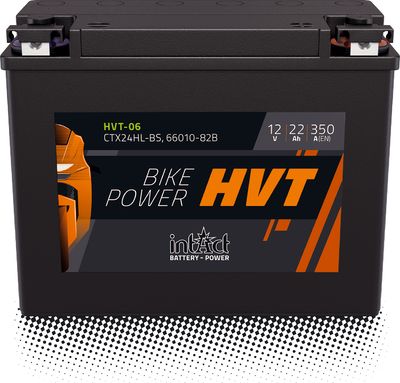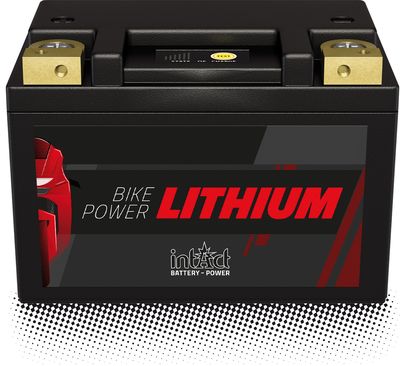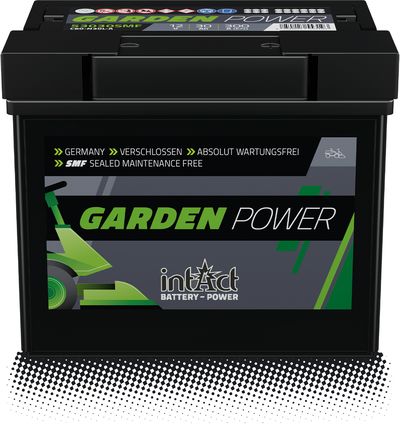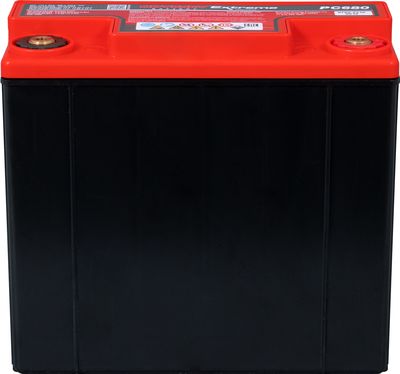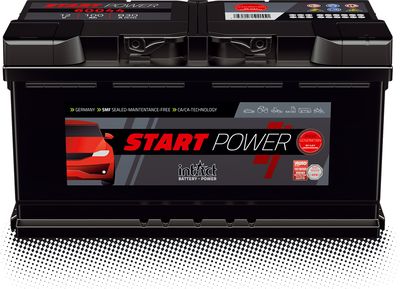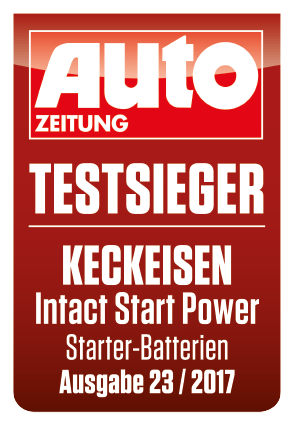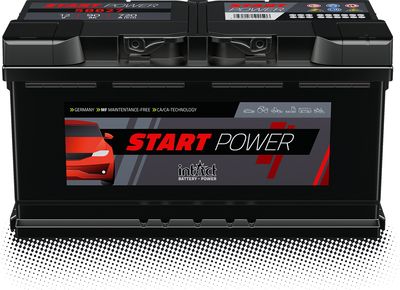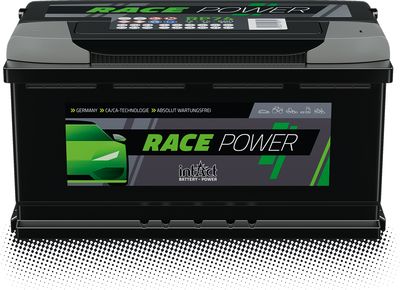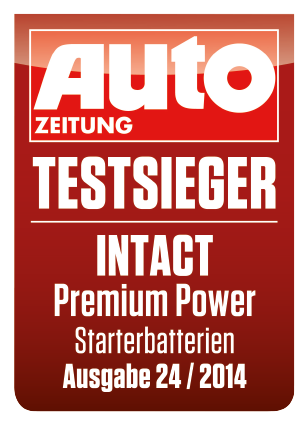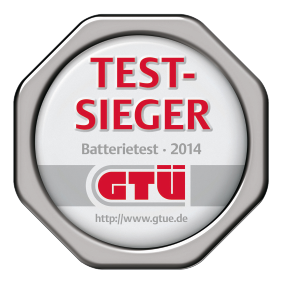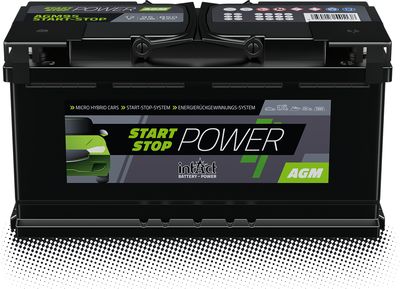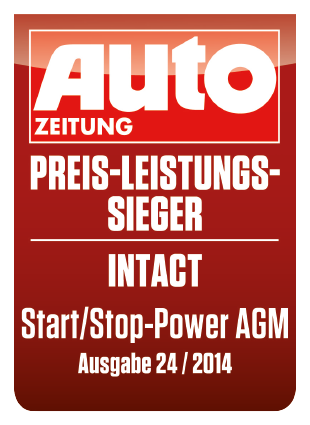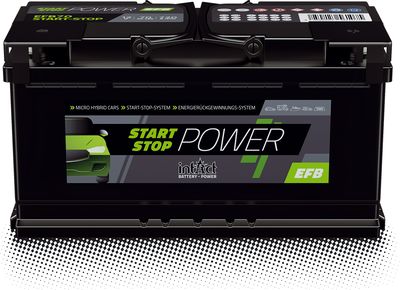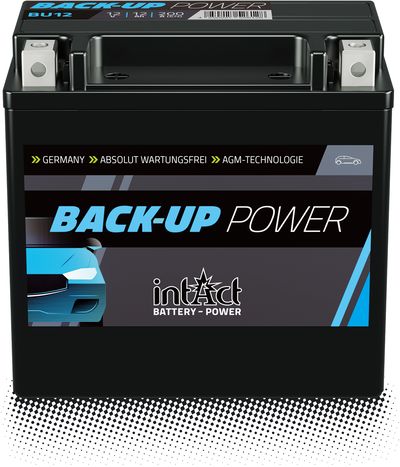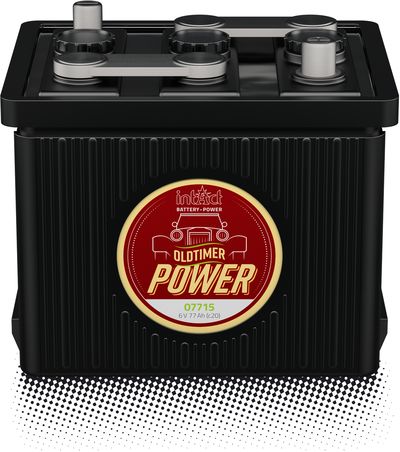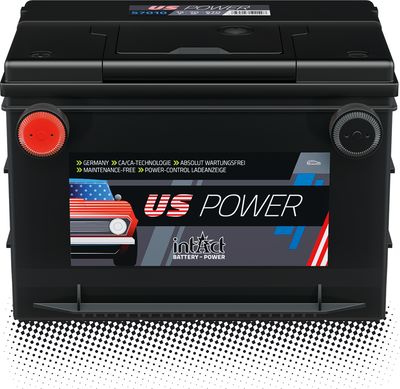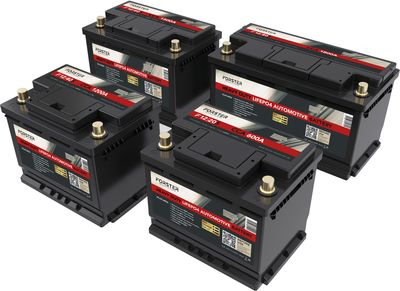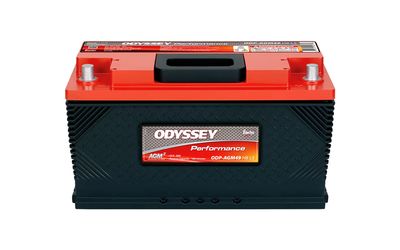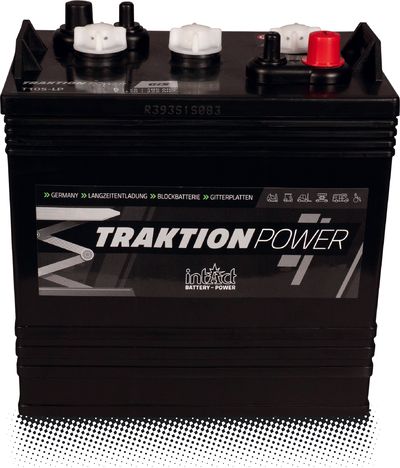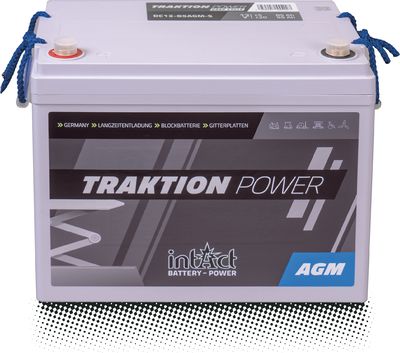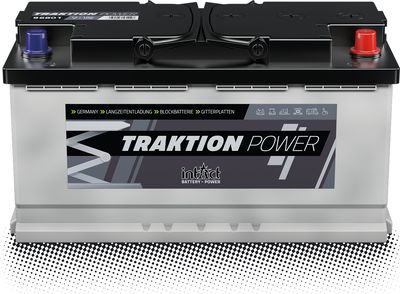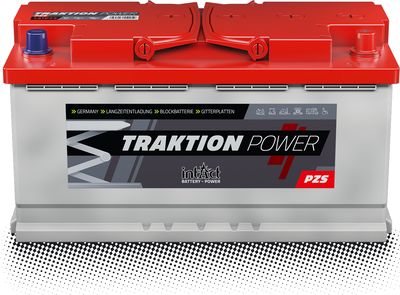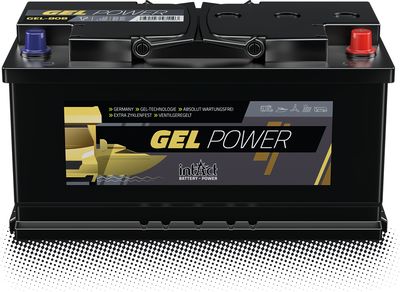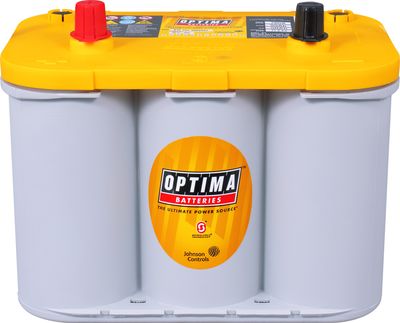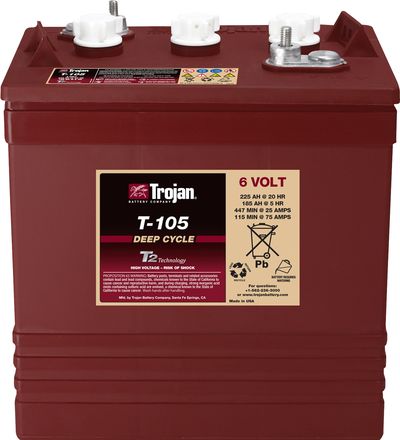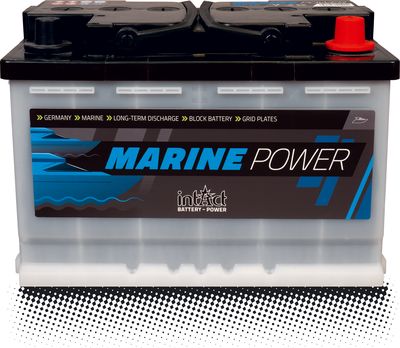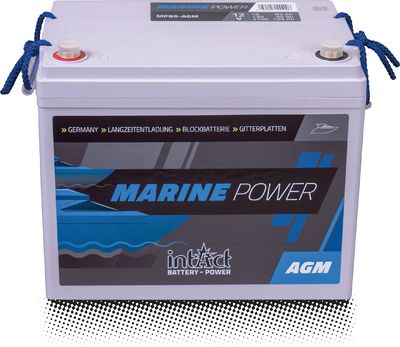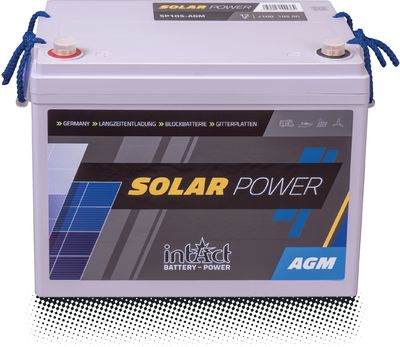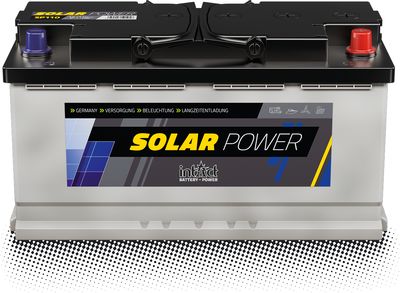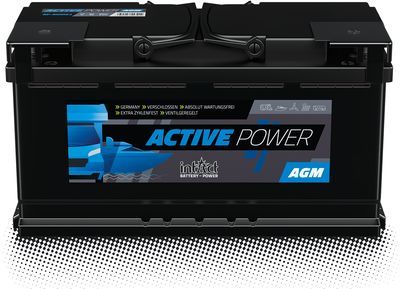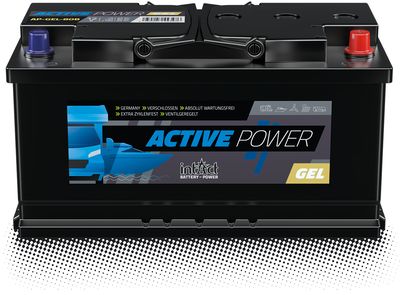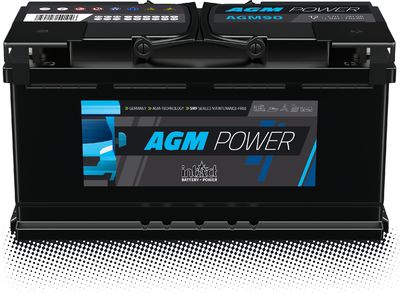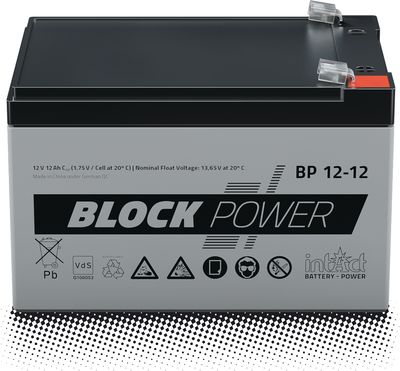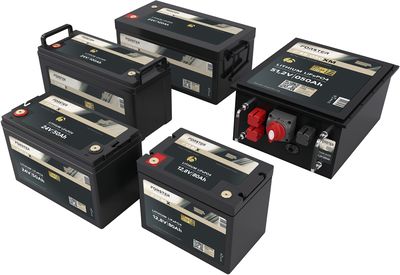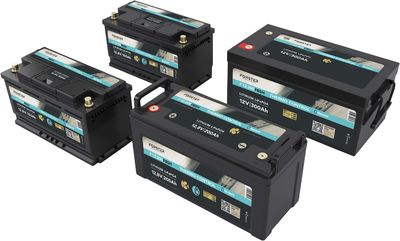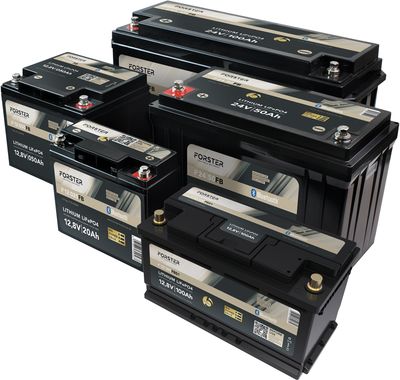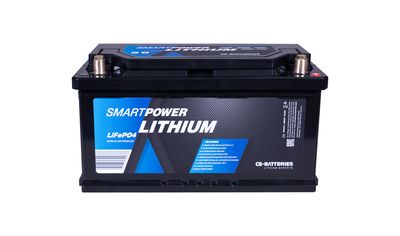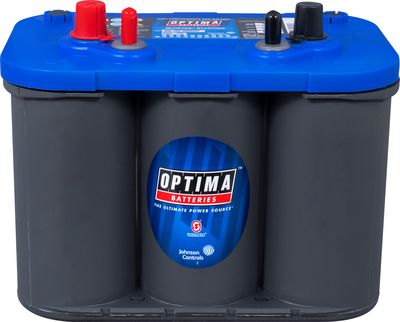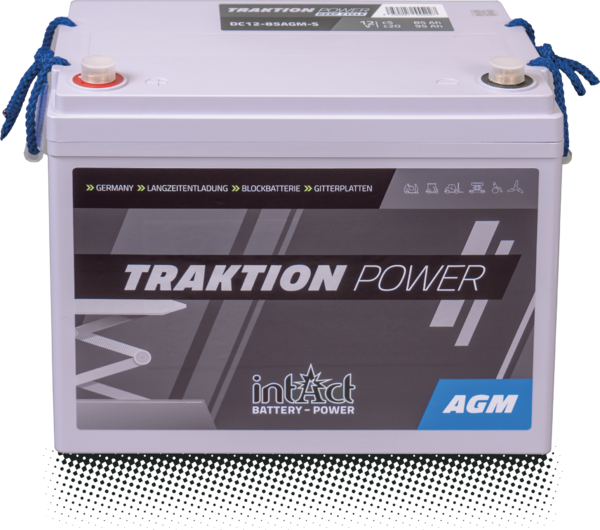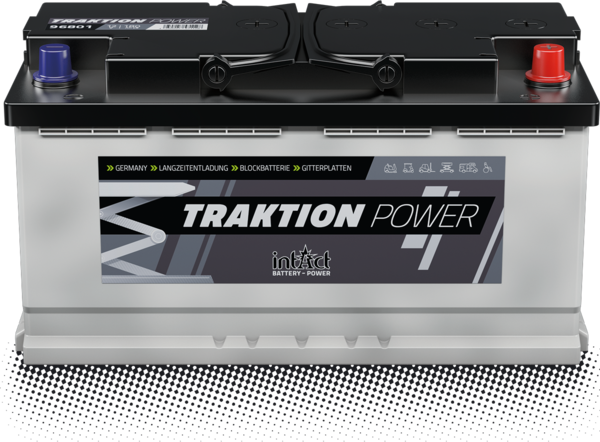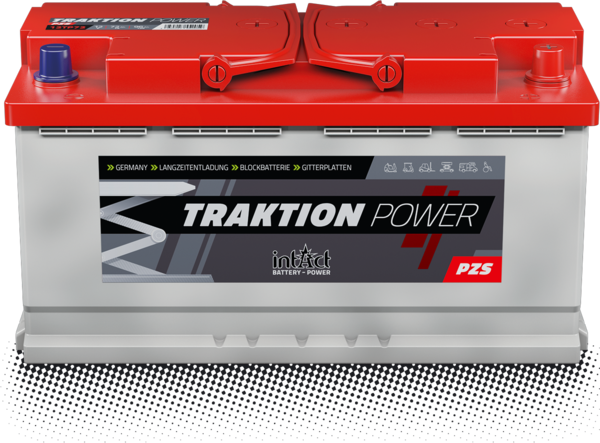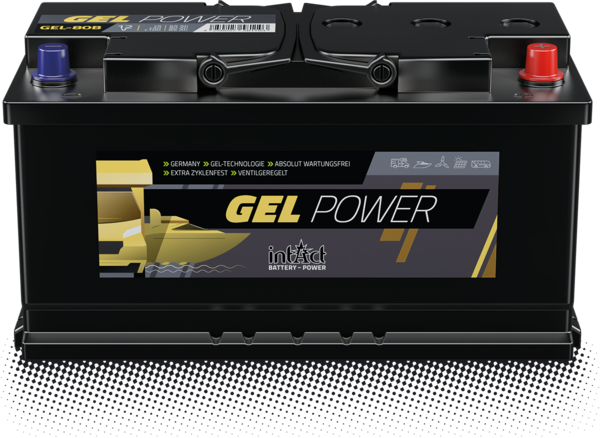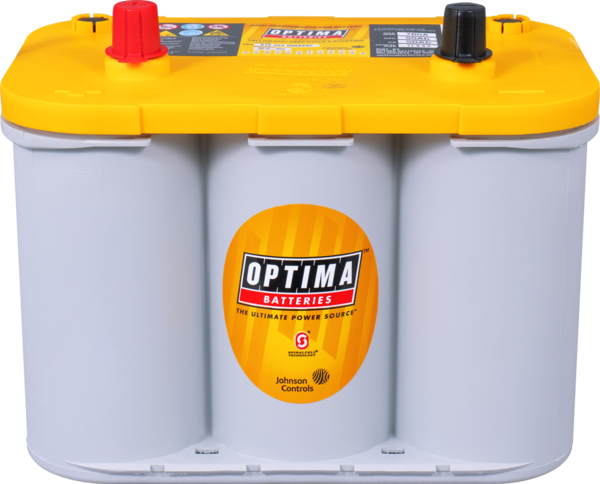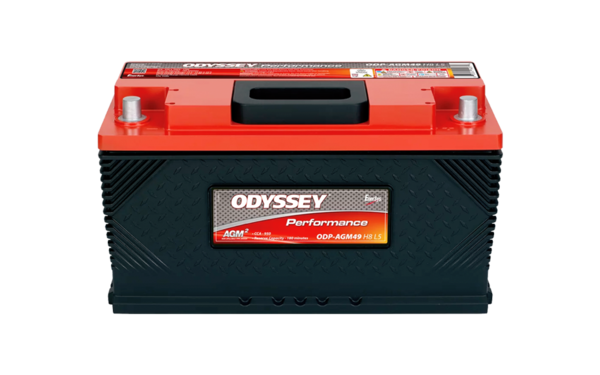The classic lead-acid battery with a closed, low-maintenance design is suitable for light use in golf carts, wheelchairs, cleaning machines, mobile lifting platforms and light industrial trucks. Grid plate batteries have a long service life and are always a good choice with their excellent value for money, effective high-current characteristics, and relative cycle stability.
Long breath
for the traction
Traction or drive batteries provide the power for electric motors in vehicles. They ensure that golf carts, wheelchairs, electric boats and other vehicles make rapid progress and that mobile lifting platforms and light industrial trucks with electric drives perform their duties reliably.
Buying advice for your traction battery!
What is a traction battery?
Traction batteries supply power to the electric motor in machines and vehicles. They are designed to be charged with a charger when not in use and then discharged when in use. Traction batteries are designed for this repetitive alternation between charging and discharging or cycling. Unlike starter batteries, they tolerate being repeatedly discharged to a depth of discharge of up to 80 % well due to the special composition and construction of the grids and separators. The cycle stability of a traction battery provides information on how often it can reach this depth of discharge under ideal circumstances before it is damaged.
What types of traction batteries are there and what can they be used for?
Individually tailored batteries
Forklift trucks and other industrial trucks require specially confectioned batteries in which lead-acid battery modules are interconnected to produce voltages of up to 96 volts. Here, the lead battery also serves as a counterweight to balance and transport heavier loads. Our industrial battery division inbatt specializes in systems consisting of batteries, chargers and numerous services.
Ready-to-use, compact block batteries
For many other applications, so-called small traction or semi-traction batteries are available as 12-, 8- or 6-volt block batteries. Capacity or power can be increased by series or parallel connection.
They are suitable for many applications in the leisure and commercial sectors, even in multi-shift operation, from children's vehicles to lifting platforms. They are available as classic flooded batteries in low-maintenance design with grid plates or armored plates (PzS) or absolutely maintenance-free batteries in GEL or AGM technology, the latter with both flat and wound grids (round cell). They differ not only in terms of maintenance, but above all in how cycle-resistant they are, i.e. how many cycles they can withstand without being damaged, and how quickly they can be recharged.
Our recommendations for suitable traction batteries, depending on your requirements for maintenance, cycle stability and charging times, can be found further down this page.
Traction batteries are used for electric boats, cleaning machines (scrubber-driers, sweepers, ride-on scrubber-driers, high-pressure cleaners, washing vacuums and industrial vacuums), electric wheelchairs, mobile homes for the elderly, rehab applications (bath lifts, upright lifts, transport lifts), lift trucks and forklifts, golf caddies, golf carts, forklifts, hybrid vehicles, work and lifting platforms, e-scooters and electric scooters, scooters, cable winches, in hybrid cars, etc.
Tips for buying a traction battery
The choice of the right battery depends on
1. the technical data and
2. the individual requirements for a suitable battery.
1.The technical data
Every battery loses power over time.
If it is loaded normally and is always fully charged, the capacity is slowly reduced.
If it is often overloaded and insufficiently charged, the capacity is reduced much more quickly, i.e. the battery ages much faster.
Ideally, current drain (load) and current consumption (charge) should be in balance. This prevents the battery from ageing prematurely.
This is particularly important for traction batteries. Since the battery is discharged virtually "in one piece" and only then recharged, the necessary capacity for the current draw should be carefully calculated and the performance for the current draw adjusted accordingly. This can prevent it from running out of power prematurely during use or the charge from falling continuously because it cannot be charged sufficiently during rest periods.
Nominal capacity (Ah)
The nominal capacity in ampere-hours (Ah) tells you how long a battery can power your vehicle.
How much power does your electric motor need including additional consumers?
Most electric motors and other electrical loads indicate how many watts and what voltage they require. From this, the current requirement can be determined in amperes:
I (current in amperes) = P (power in watts) : U (voltage in volts)
How long do you need the vehicle or the machine?
This is about the total amount of time you plan to use the vehicle before it is charged again. Do you plan to use a lift only occasionally for a short period of time and charge it in between, or will a cleaning machine be used permanently in multiple shifts? Do you cover long distances with an electric boat or short ones with a golf cart? Do you stop at charging stations along the way or not?
The previously determined ampere value multiplied by the planned usage time in hours results in the required nominal capacity in Ah. To be on the safe side, this value should be multiplied by a factor of 1.3 to avoid discharging the battery unnecessarily deep.
Ah (nominal capacity in ampere-hours) = I (current in amperes) x planned time of use under full load (in hours) x 1.3 (safety factor)
Some advisors recommend instead to use the value in watt hours as a basis for calculating the suitable battery. Since all the data has already been determined, this value can be easily determined:
Wh (power in watt-hours) = Ah (nominal capacity in amp-hours) x U (voltage in volts)
Cycle stability
For our traction and supply batteries, the cycles are specified according to IEC 254-1. They state how often the battery can be discharged to a depth of discharge of 80 % and recharged under ideal circumstances without suffering damage.
If the battery is regularly discharged to a lesser depth, it can withstand correspondingly more cycles.
In applications where not much current is drawn at a time before recharging, batteries for light cyclic loading are sufficient, such as the intAct Traktion-Power, the Optima Yellowtop or the Odyssey traction batteries.
If the battery regularly reaches its limits, is often deeply discharged, possibly also because the time for recharging is not always sufficient, batteries for heavy cyclic use with up to 1,000 cycles such as the intAct Traktion-Power PzS are suitable.
In between are batteries like the intAct GEL-Power and the Trojan Deep-Cycle for the medium cyclic range with up to 700 cycles.
Installation dimensions and terminals
A battery must of course fit in your vehicle, machine or device. Check the dimensions of your old battery or the available space where you want to install the battery.
Check that the terminals are easily accessible, that you can reach them easily with the existing cables and that the connections of your cables fit the battery.
Some batteries have a base plate that you can use to secure them if you have the space.
2. Select battery suitable for individual requirements
Traction batteries come in different designs. There are AGM batteries with flat grid plates or wound grids (spiral cell batteries), GEL batteries and flooded lead acid batteries with grid plates or armored plates or tubular plates.
Each battery technology has particular strengths, but also weaknesses. Depending on the requirements your battery has to meet in the respective application, or which properties you want, some battery technologies are more suitable or less suitable.
It is important to weigh up the properties.
How much time does the battery have to fully charge again?
To prevent the battery from aging prematurely, it should ideally be fully charged before power is drawn again. In commercial operations, however, downtimes mean loss of value, and in leisure and personal use, inconvenience. Thus, it is all the more forward-looking not to simply choose the largest and cheapest drive battery, but one that can be fully recharged in the available and dispensable time.
Charging batteries is a science in itself. We have provided detailed information on this under chargers in the knowledge area.
Basically:
- AGM batteries can be charged with a higher charging current than flooded batteries or GEL batteries. As a result, they charge faster. Especially the Odyssey traction batteries, AGM batteries with thin plates of 99.99% pure lead and the Optima Yellowtop in AGM technology, where the current consumption is improved by the tightly wound grids.
- However, different charging characteristics are required for the different battery technologies. These regulate when in the process of charging which voltage and current values are sent to the battery and for how long, in order to obtain an optimum charging result without overheating or other damage to the battery.
Is it important that the battery can be tilted and not leak?
Vehicles and devices with electric motors can also fall over. Leaking battery acid can damage the motor or the housing. The battery will also be damaged if the grids are not covered with electrolyte.
Flooded batteries like the intAct Traktion-Power PzS need regular maintenance and have vent caps that can be removed, They can only be used upright and normally leak immediately when tilted.
Sealed GEL or AGM based batteries like the intAct GEL-Power or the Odyssey batteries cannot be opened. They have a safety valve and are also called VRLA batteries (Valve Regulated Lead Acid). While they should not be left permanently tilted, they will not leak immediately either.
Will your battery not be used for a long time?
Many vehicles, devices or machines are only used seasonally or on certain occasions. Ideally, your battery should be ready whenever you need it. That's why we recommend that batteries are always fully charged, stored at approx. 15 to 18° C and dry, and disconnected from consumers during longer periods of standstill. But even with these precautions, the battery loses voltage over time.
To counteract self-discharge, it makes sense to charge the battery with a charger every 6 to 8 weeks. There are also chargers that can remain permanently connected to the battery and constantly recharge it slightly. However, this is at the expense of the battery's service life.
Or you use a GEL battery like the intAct GEL-Power which has a lower self-discharge than batteries with other technologies.
You don't like maintenance?
With low-maintenance batteries, you should regularly check the fluid level and top it up with distilled water if necessary. You can recognize them by the vent caps on the top, as with the Trojan Deep-Cycle flooded battery.
With an optional water filling system, the battery fetches the lost fluid itself and the service intervals are extended.
If you want to save yourself even more work, we recommend that you choose a completely maintenance-free battery that requires no maintenance whatsoever.
Absolutely maintenance-free batteries are available on AGM or GEL basis. Both are sealed and equipped with a pressure relief valve. They are also called VRLA batteries, i.e. valve-regulated lead-acid batteries. Here no liquid is lost. In the AGM battery, the electrolyte is bound in the glass fibre separators, in the GEL battery it is fixed in a gel-like manner.
Tipp
You don't have to stick with the original technology.
An upgrade is always possible!

